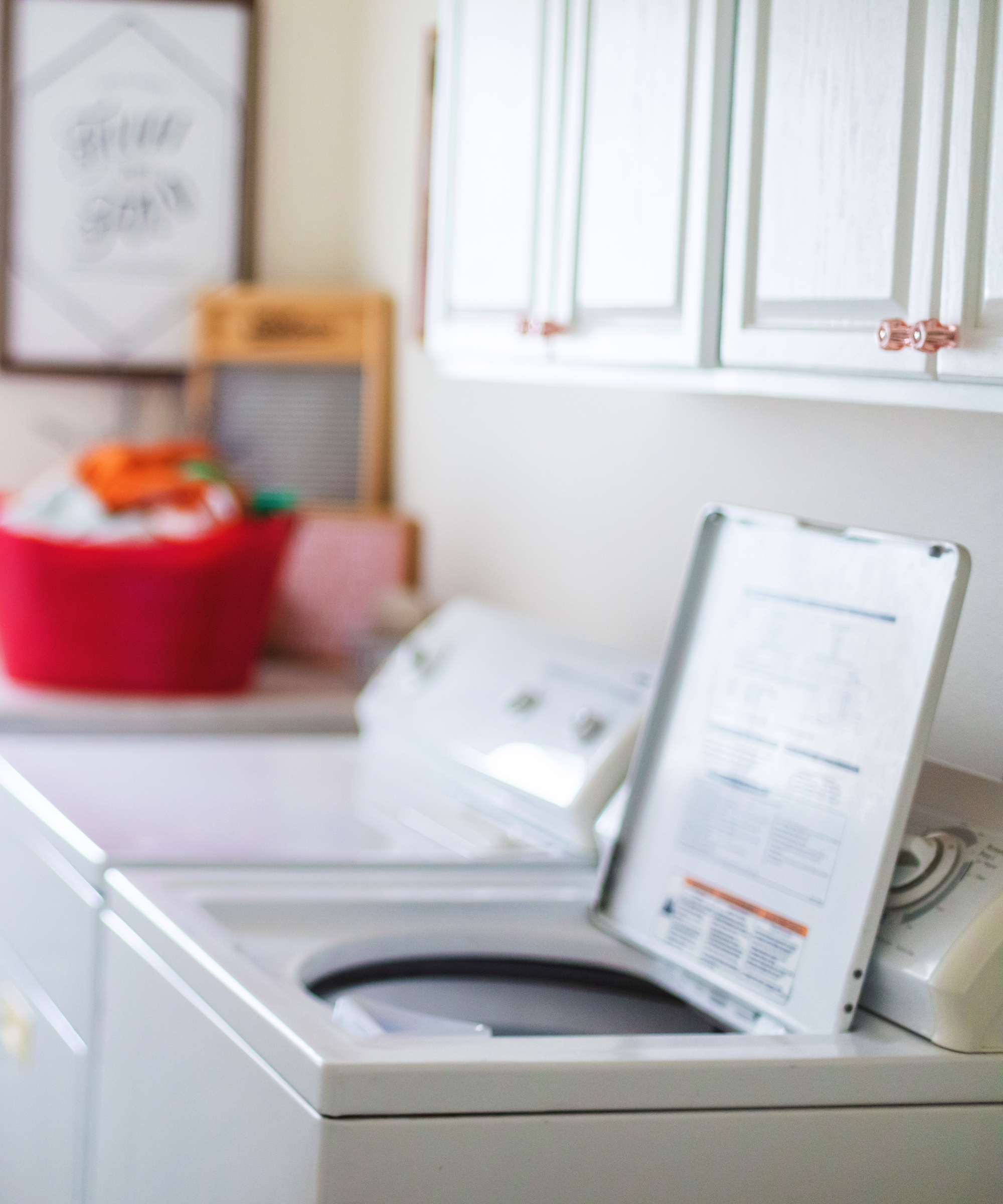How to wash microfiber towels and cloths without ruining them
Laundry experts explain how to wash microfiber towels and cloths whilst keeping them soft and absorbant


Knowing how to wash microfiber towels and cloths properly is essential in maintaining their high absorbency levels and keeping them working effectively.
You might assume washing microfiber products is as simple as chucking them in the washer with your favorite detergent, but our cleaning experts advise taking a more mindful approach to caring for towels and cloths made of this soft and highly porous material.
Here, our panel of laundry and cleaning experts share their best advice for washing towels and cloths made of microfiber to keep them working well for you.
How to wash microfiber towels and cloths
We often suggest using microfiber cloths for household cleaning, washing them properly in between without wicking away their absorbency for good is vital.
Laundry expert, James Jounsays, “Proper care for microfiber towels is not complicated, and can ensure your towels remain effective even after hundreds of washes.
"Proper laundry care will also mean the pores of the towels remain open, maximizing the trapping of dirt and minimizing streaks and lint.”
1. Separate from regular laundry

Although washing microfiber towels and cloths on their own might seem like a waste of time and water, it’s important for keeping the microfibers free from lint.
Get small space home decor ideas, celeb inspiration, DIY tips and more, straight to your inbox!
“Never wash microfiber towels with natural fabrics like cotton or wool, as microfiber towels are positively charged, which naturally attracts lint, rendering your towels less effective,” explains James.
If washing separately isn’t an option, pop microfiber towels and cloths in a mesh laundry bag (we like this zip-closure set of three mixed size mesh laundry bags from Amazon).
To keep microfiber cloths and towels separate from cotton and other natural fibered textiles, we'd also recommend investing in a laundry basket with sections (such as this three-section 90 litre laundry basket from Bed, Bath and Beyond to prevent lint transfer before entering the washing machine.
2. Prep before washing

Before washing microfiber cloths and towels, shake out any excess dirt and dust over the trash to guarantee a deeper clean in the machine.
James adds, “For heavily soiled towels, you can also pre-soak them (this collapsible, easy-to-store 10 litre bucket from Amazon is ideal for such tasks without taking up too much space when not in use) before running them through the washer to ensure the wash cycle is effective.”
We like to use the classic pre-soak mix of one cup white vinegar (the smell will wash out but we like this lavender-scented vinegar from Amazon), enough cold water to cover your items, and a good sprinkle of baking soda (available in most grocery stores so look out for a pack such as this 1 lb pack of Arm and Hammer baking soda from Target) to help break down dirt beforehand.
3. Select the right temperature and setting

You might assume it’s best to wash all bath sheets and bath towels in hot water, but it’s a good idea to wash microfiber cloths and towels at a cooler temperature, James advises.
He says, “Do not wash in hot water above 160° Fahrenheit as hot water can damage the fibers and reduce their effectiveness of microfiber.” Instead, he advises to wash lightly soiled items in cold water and heavily soiled items in slightly warmer, but never hot, water.
When selecting a spin cycle for microfiber, Cleaning expert, Karina Toner adds it’s best to opt for a low spin setting. Higher ones can damage microfibers, turning once soft cloths into an unruly, non-funtional mess.
4. Use fragrance-free detergent

Where possible, it’s best to avoid using a scented detergent when washing microfiber towels and cloths.
Instead, James recommends using an additive and fragrance-free detergent (such as this dye and perfume-free laundry detergent from Walmart). He says, “You should only use about 50% of the detergent you would normally use (dependent on your detergent concentration and efficiency of your washer) to avoid soap buildup.”
Both our experts warn against using fabric softener when washing microfiber, as these liquids tend to coat microfiber strands, rendering them less effective at absorbing liquid and dirt.
A great alternative for ensuring microfiber cloths smell pleasant, is adding a tablespoon of white vinegar (such as this Heinz white vinegar from Amazon) to the wash cycle.
5. Dry them properly

When it comes to drying microfiber towels and cloths, James advises it's best to dry without a dryer. He says, “The best way to dry them is air drying on a flat surface, or line drying."
If you prefer to dry them in the dryer, it’s advisable to use a very low heat setting. James adds, “Do not dry hotter than 140° Fahrenheit, as high heat will render them less effective.
He also suggests ensuring your machine's lint trap is thoroughly cleaned before use, and saving dryer sheets (such as these highly-rated dryer sheets from Amazon) or dryer balls (such as these extra large natural wool dryer balls from Walmart) for other types of laundry.
Now you know how to wash microfiber towels and cloths, consider investing in a specialized detergent or rejuvenator (such as this microfiber detergent from Amazon) to maintain their performance over time. This will preserve the function of your microfiber items and keep them working for you for the longest time possible before needing replacement.
Next, learn the best laundry hacks for keeping your items fresh, clean and damage-free, and the laundry myths to ignore.

Hi! I’m Beth Mahoney and I’m a former staff writer at Real Homes. I’ve been a journalist for the national press for the past six years, specializing in commerce and trends-related lifestyle articles, from product reviews and listicles to guides and features. With an eye for pretty things (think: quirky wall prints, scalloped edge furniture, and decadent-looking tableware) but a limited budget, I love nothing more than a bargain buy.

